
[ad_1]
“], “filter”: { “nextExceptions”: “img, blockquote, div”, “nextContainsExceptions”: “img, blockquote, a.btn, ao-button”} }”>
Heading out the door? Read this article on the new Outside+ app now available on iOS devices for members! >”,”name”:”in-content-cta”,”type”:”link”}}”>Download the app.
You likely know that maintaining a strong core is important for your overall health and fitness. But finding the time—and resources—to build that necessary strength can be, well, challenging, especially if you’re constantly on the go or don’t have access to a gym.
And no, core workouts aren’t about a six-pack. A strong core can improve your posture, balance, and stability. It can also prevent back pain and injuries, keeping you on your mat as much as you please.
Best of all, you don’t need heavy weights or fancy equipment to achieve these goals—just your own bodyweight. Plus, no-equipment core workouts can be tailored to fit your needs and fitness goals. Each of these exercises has a modification option, in addition to the full version of the movement. Regardless of which option you practice, each exercise will help you work all aspects of your core—including your obliques and erector spinae.
No-Equipment Core Workout
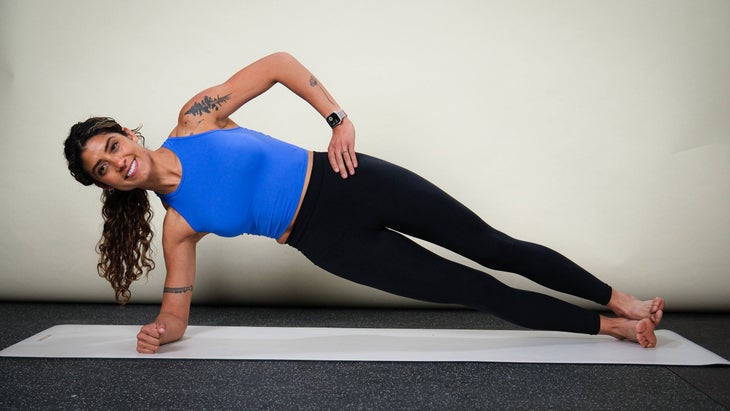
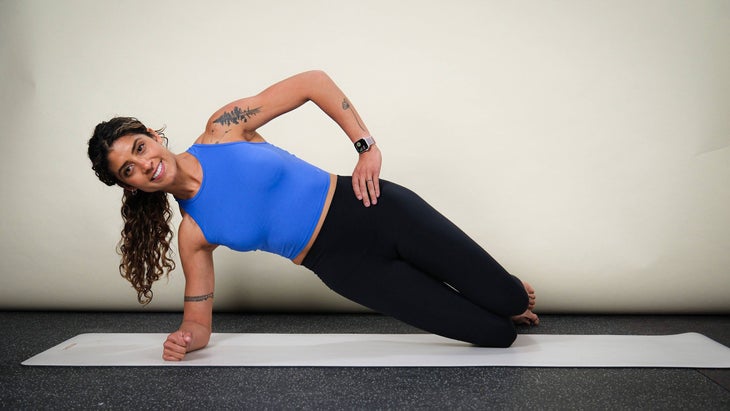
1. Vasisthasana (Side Plank or Kneeling Side Plank)
What it does: Works your obliques and shoulder girdle.
How to do it: Begin by laying on your side. Place your forearm on the ground, with your elbow in line with your shoulder. Your forearm and bicep should make a 90-degree angle. Stabilize your shoulders by tucking your shoulder blades down and away from your ears.
To move into Side Plank, stack your legs on top of each other, pressing the lower side of your bottom foot into the ground. Raise your hips up.
For Kneeling Side Plank, create a 90-degree angle with your quads and calves, stacking the upper half of your legs on top of each other. Make sure your knees are aligned with your hips, and lift your hips up.
Volume: Hold this position for 15 to 30 seconds, repeating it on both sides of your body. Complete two to four repetitions, resting for 30 seconds in between sets.
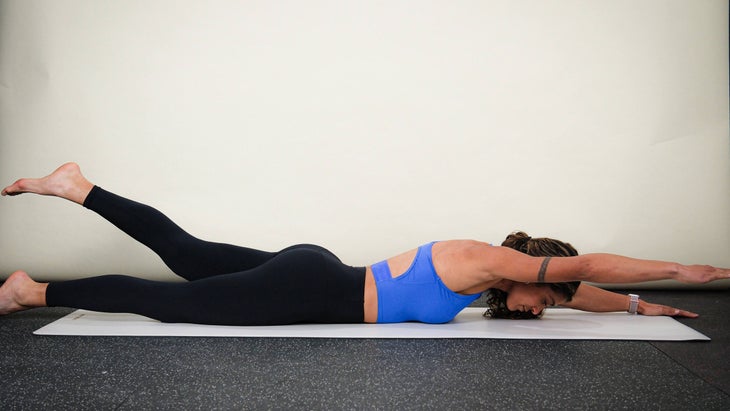
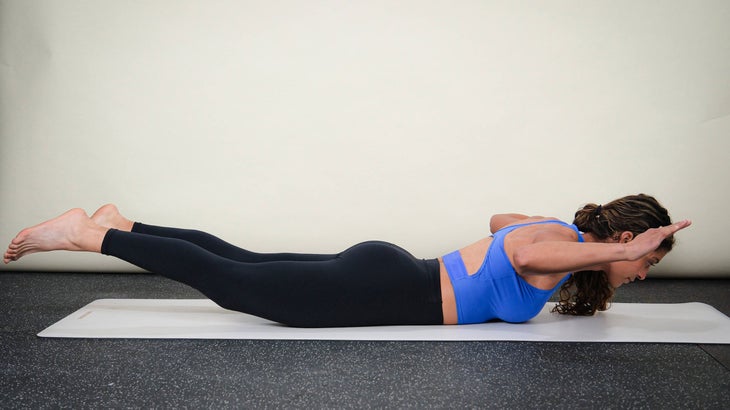
2. Alternating Superman or Elbows Bent Superman
What it does: Works your erector spinae (part of your overall core and trunk), as well as your glutes and hamstrings. It also helps improve your posture and prevent back pain.
How to do it: Lie on your stomach, with your arms stretched overhead and your legs fully extended. While looking at the ground, raise your opposite arm and leg off the ground. Engage your core, lower back, and glutes. Hold this lift for three seconds at the top, before switching to the other arm and leg.
If you have issues with shoulder mobility or range of motion, practice an Elbow Bent Superman, which works the same muscle groups as the previous exercise. Start in the same position as the Alternating Superman, with your stomach on the ground and your legs and arms stretched. Bend your elbows to 90 degrees. Lift your arms and legs off the ground. Hold this position for a few seconds before lowering down.
Volume: Move through this exercise for 30 to 60 seconds. Complete two to four sets, resting for 30 to 45 seconds between sets.
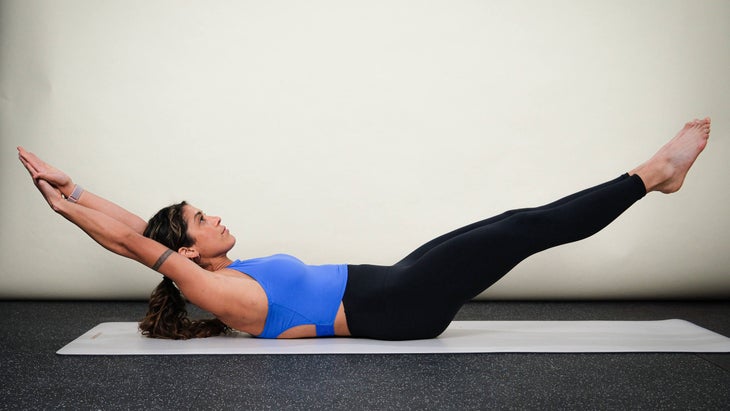

3. Hollow Hold or Modified Hollow Hold
What it does: Works your external obliques, rectus abdominis, psoas, and quads.
How to do it: Start by lying on your back with your arms overhead and legs extended in front of you. Raise your arms and legs off the floor, leaving your lower back and hips on the floor. Your body should resemble the shape of a banana. Hold this position for 30 seconds.
For the modified version, instead of straightening both legs, bend one knee and extend the other leg. Make sure you don’t feel an arch in your low back.
While holding this exercise, make sure to remember to breathe. If you find yourself holding your breath, try the modified version.
Volume: Hold this exercise for 30 to 60 seconds before lowering down. Repeat it two to four times, resting for 30 to 45 seconds between repetitions.
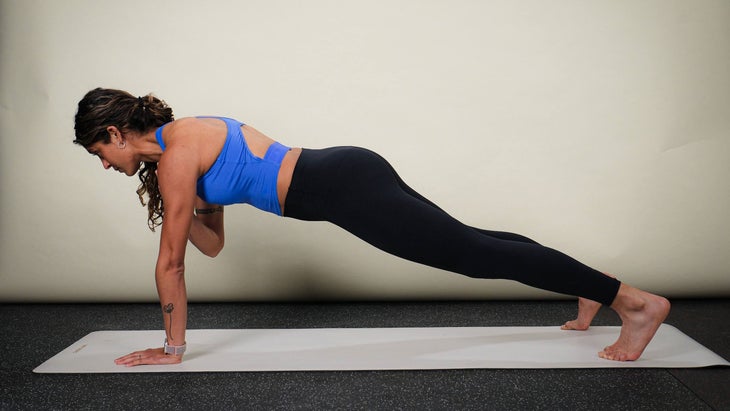
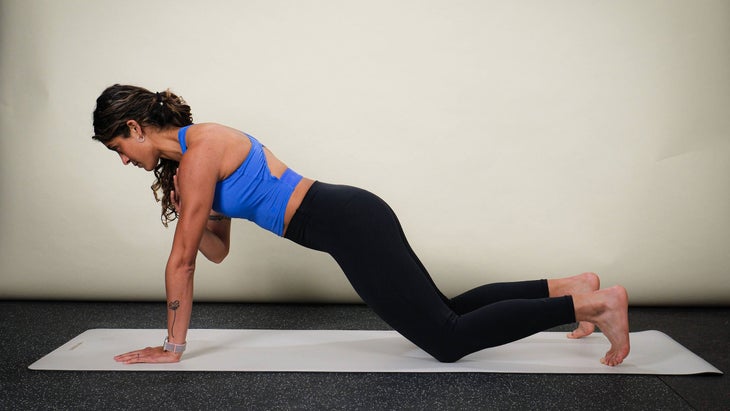
4. Plank Shoulder Taps or Kneeling Shoulder Taps
What it does: Works your entire body, especially your shoulders, rectus abdominis, quads, obliques, and lower back. Helps with stability.
How to do it: Start in a plank position, with your feet shoulder-distance apart and your hands directly under your shoulders. Engage your core and squeeze your glutes. Without rocking your hips, lift your left hand up and tap your right shoulder. Lower it back down to the ground. Lift your right hand to tap your left shoulder. Continue to cycle through this movement, alternating sides. To stabilize your hips during this exercise, pretend that you have a glass of water on your back—and try to move without spilling the water.
If your hips keep rocking, drop to your knees, maintaining the same upright position in your arms and upper body.
Volume: Move through this exercise for 30 to 60 seconds. Complete two to four rounds, resting for 45 to 60 seconds between sets.
[ad_2]